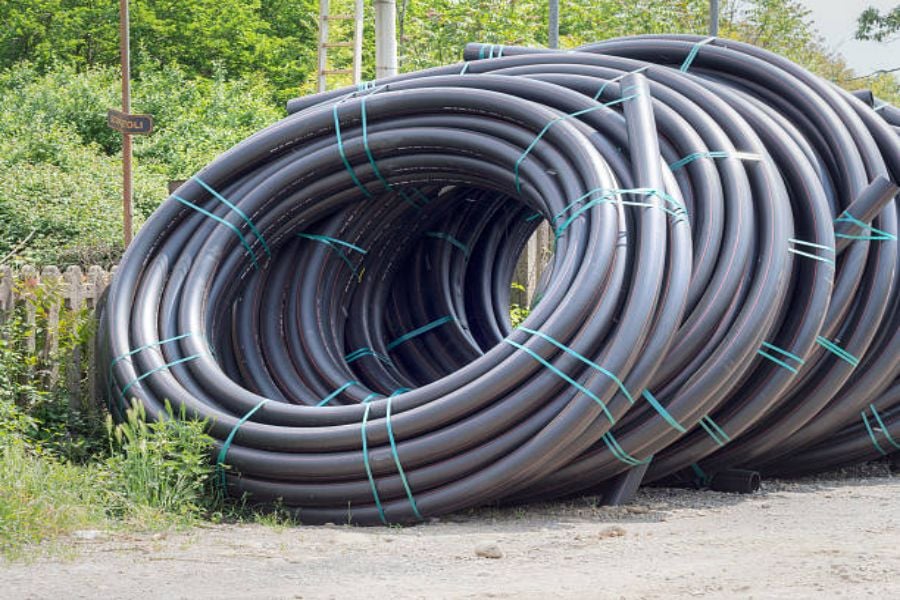Introduction:
plastic polyethylene piping is a cost-effective and durable solution for various plumbing applications. In recent years, it has gained popularity due to its numerous benefits, such as its flexibility, corrosion resistance, and easy installation. This article will provide a comprehensive guide to plastic polyethylene piping, discussing its types, properties, advantages, and applications.
Types of Plastic Polyethylene Piping:
There are three main types of plastic polyethylene piping: high-density polyethylene (HDPE), cross-linked polyethylene (PEX), and low-density polyethylene (LDPE). HDPE pipes are strong and durable, used primarily for potable water, sewer, and gas applications. PEX pipes are flexible and easy to install, often used for radiant floor heating and domestic water supply. LDPE pipes are commonly used for irrigation and landscaping applications.
Properties of Plastic Polyethylene Piping:
Plastic polyethylene piping has several key properties that make it a suitable choice for various applications. It is lightweight, easy to handle and transport, and resistant to corrosion, chemicals, and UV rays. Additionally, it has a high tensile strength, making it resistant to cracking and breaking under pressure.
Advantages of Plastic Polyethylene Piping:
Plastic polyethylene piping offers numerous advantages over traditional piping materials like copper and steel. It is cheaper, easier and faster to install, and requires less maintenance. It also has a longer lifespan, reducing replacement and repair costs. Furthermore, it is eco-friendly, as it can be recycled and reused.
Applications of Plastic Polyethylene Piping:
Plastic polyethylene piping is used in various applications, including water supply, gas distribution, wastewater treatment, irrigation systems, and electrical conduits. It is also used in industrial and commercial settings, such as chemical processing, oil and gas drilling, and mining operations.
The Installation Process of Plastic Polyethylene Piping:
The installation process of plastic polyethylene piping is simple and straightforward. First, the pipes should be cut to the required length using a pipe cutter or saw. Then, the joint fittings should be attached to each end of the pipe using a special fusion welding machine. The fittings are heated until the plastic melts and fuses together, creating a strong and leak-free joint.
The Maintenance of Plastic Polyethylene Piping:
Plastic polyethylene piping requires minimal maintenance, as it is resistant to corrosion, rust, and degradation. However, it is essential to ensure that the pipes are free from debris and blockages, which can reduce water flow and cause damage to the system. Regular inspections should be conducted to identify any signs of damage or wear and tear.
The Cost of Plastic Polyethylene Piping:
Plastic polyethylene piping is a cost-effective solution compared to traditional piping materials like copper and steel. The price varies depending on the type and size of the pipes, as well as the installation process. However, the overall cost of installation and maintenance is lower due to its reliability and longevity.
Potential Risks of Plastic Polyethylene Piping:
Although plastic polyethylene piping offers numerous advantages, there are potential risks associated with its use. One of the most significant risks is the possibility of environmental stress cracking, which occurs when the pipe is exposed to stress and harsh chemicals. Additionally, inadequate installation or maintenance can cause leaks, resulting in property damage and health hazards.
Conclusion:
Plastic polyethylene piping is a versatile and reliable solution for various plumbing applications. It offers numerous advantages, including cost-effectiveness, durability, flexibility, and ease of installation. With proper installation and maintenance, it can last for decades, reducing replacement and repair costs. However, it is essential to be aware of the potential risks and take measures to prevent them.
Quote Inquiry
Contact Us

